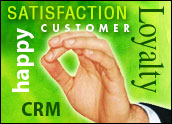
Today, loyalty programs come in all shapes and sizes, and they give retailers, financial institutions and hotels opportunities to reward their best customers like never before. New loyalty solutions help track customers’ spending trends, including when and how much they are spending. Targeted marketing efforts that cater to their specific interests can improve customer experiences, increase marketing efficiencies and ultimately cut business costs.
A common type of loyalty program is one that offers tiers, or levels, for customers — like gold, silver and platinum, for example. Each tier offers new discounts and promotions that encourage frequent visits and purchases. The most successful tiered programs are ones that are simple for both the consumer and employees to understand. A 1-2-3 hierarchy, for example, keeps a program simple while giving customers levels to aspire to.
There are many benefits to offering a loyalty program that is tailored to your customers. However, there can be risks, too — like opening the door to fraud. It’s important not only to understand what motivates your customers, but also to think through the potential rewards and risks.
VIP Treatment
One benefit to having a tiered loyalty program is the ability to reward your best customers in a way that makes them feel special. Giving extra rewards to your most loyal customers is like giving them a personalized “thank you” note with each visit.
Such perks can be real-time discounts at the gas pump or a free mug and coffee refill to those daily coffee shop visitors. Even non-monetary rewards like VIP boarding at the airport or free gift wrapping during the holiday season are perks customers appreciate. Extra discounts, services and offers can produce dividends for the customer and, ultimately, for your business.
With tiered loyalty programs, it’s important to make it very clear to customers how they reach each level from the moment they sign up. The differentiation between the tiers should be significant enough to entice customers to participate and strive for the highest level.
For instance, many financial institutions create loyalty programs based on how much customers spend on their bank-affiliated credit cards each year. The breaks are clear — first level customers spend US$10,000 or less, second level customers spend $10,000 to $25,000 and the top level customers spend $25,000 or more.
Making Happy Customers Happier
Just like other aspects of the customer service experience, if your customers are happy with your loyalty program, they will keep coming back for more. A tiered loyalty program can provide ways to keep the customer engaged and even attached to the program.
Let’s say a pet store owner implements a loyalty program that offers more discounts on items such as dog food as customers make repeat purchases. Knowing they will get more discounts on items as they frequent the store, more customers will want to make return visits to receive bigger discounts.
Customers also want to aspire to the highest level as they become more loyal. Since tiered programs offer a lot of flexibility, it’s easier to create more interest by offering additional discounts and offers to your best customers.
If a financial institution wanted to increase the number of top tier members using its credit card, it could offer special deals with retail partners, triple points given for grocery purchases, or special mortgage rate discounts. Targeting these perks to the appropriate customers is as critical at this stage of the program as it is when you originally create your program. Knowing what will motivate customers and offering the right rewards will ultimately generate more loyalty to your business.
Risky Business
Variety in a loyalty program gives customers more choices, but too many choices can be risky. For one, fraud can be an issue.
Customers who aspire to the top loyalty tier level may attempt to get there in a variety of ways that might negatively affect your bottom line. For instance, a shopper at a clothing retailer could make a large purchase at one visit in order to get to the highest level. After receiving credit for the points earned on the purchase, the shopper could return the clothes to the store. The shopper would walk away with the points, while you’d be left with lower profits.
Another risk with tiered programs generally is customer indifference. If the process is too complicated or difficult, the likelihood that customers will abandon the program and your business completely increases significantly.
One way to avoid this is to keep the requirements as simple as possible — don’t add extra layers. On the other hand, if your program remains stagnant, customers can forget about it altogether. Some businesses think just creating the program is enough, and they never offer anything new for customers. This can lead to losing the customer engagement the program originally created.
Know Your Customers
Consumers have choices about where to shop and how to spend. Whether you are a national bank or a local restaurant, your loyalty program is part of your brand. So, make sure you’ve done your homework before implementing a tiered program.
While you want to stand out from your competition — whether it’s a local shop or a national chain — it’s important to create easy-to-understand tiers and programs that won’t cause risk for you or your customers.
It’s also important that the program reward your best customers in ways that make them feel special, as well as continue to engage them through perks and discounts that build on their loyalty to your business.
Stuart Kiefer is general manager of loyalty solutions atFirst Data. He can be reached at [email protected].












































